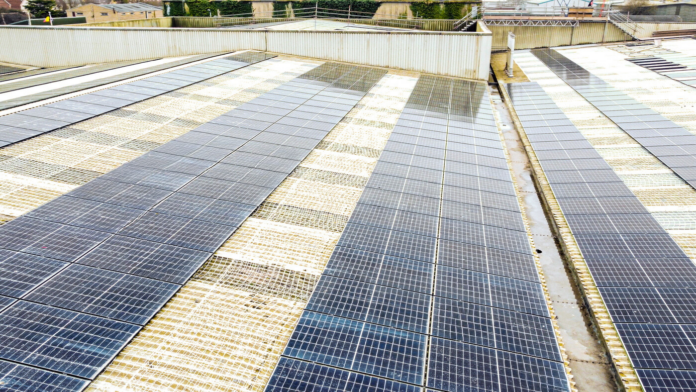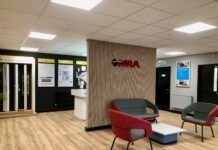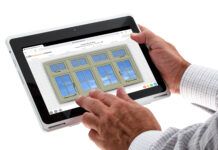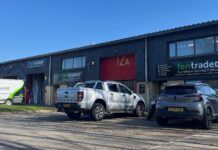
Deceuninck has installed 2,200 solar panels onto the roof of its Calne manufacturing facility, generating a total of 895,762 kWh of clean energy.
The renewable energy source not only reduces Deceuninck’s reliance upon fossil fuels for its operations, but also significantly reduces CO2 emissions by almost half a million kilogrammes a year.
Darren Woodcock, Operations Director, Deceuninck, said: “The solar panels went live on 15 March. We only experienced around four hours of operations downtime whilst the inverters were connected. It was a seamless installation.
“We have every aspect of the roof that could be covered in panels, covered. The solar energy will help us offset rising energy costs, but will also generate huge environmental savings, further reducing our CO2 emissions, and allowing fabricators to benefit from the saving.”
Deceuninck has established a lead on sustainability based on its commitment to the Science Based Targets (SBTi) programme, with a headline pledge to cut the CO2 emissions from its own operations (Scope 1&2) by 60% by 2030 from a 2021 baseline.
Research by Deceuninck shows that while fabricators and installers want to lower their carbon footprint, many struggled to know where to start and were put off by the complexity involved in the process.
As a result of Deceuninck’s new renewable energy usage, fabricators can now increase their own sustainability simply by purchasing Deceuninck products and benefitting from the work done upstream in the supply chain.
In addition to allowing window companies to measure their carbon footprint through its innovative Carbon Calculator, Deceuninck has also provided guidance on how companies can lower their own CO2 emissions – and how a more sustainable approach can help them win more business.
This includes a Sustainability Marketing Toolkit, with headline positional statements drawing on Deceuninck’s commitments under Science Based Targets; own-branded-printable sustainability brochures; plug-and-play website content; e-shots; social media assets; presenter decks; and video content; door-drop leaflets; sustainability logos; showroom pull-up banners, wall decals; and flyers.
“We are going to be able to display the number of trees that we have saved every day by cutting our CO2 emissions through using clean energy in our reception area”, said Darren.
“This is a clear, tangible way of communicating our savings to our customers, in the same way that our customers can benefit from the free, substantial messaging and resources available within our Marketing Toolkit.”



